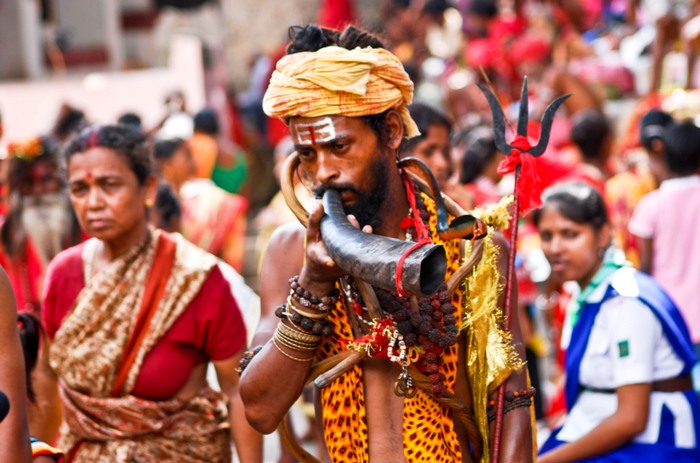In 1337 Muhammd Shah send 1,00,000 horsemen well equipped to Assam, but the whole Army perished in the land of witchcraft and not a trace of it was left.
– A History of Assam by E.A.Gait, quoting Tabaqat-i-Nasiri.
For long Assam and the kāmākhyā pitha has been known to outsiders as the place for ‘black magic.’ However, black or white is just a matter of perspective. Fire can burn, but it can also be used for cooking – it is the same Shakti but used for different purposes. The only ‘black magic’ in the world lies hidden inside the darkness of a human heart. Anyway in Tantra sadhana the greatest test of a sadhaka is his/her ability to hold Shakti in his adhara – mind-body – and apply the same as needed, preferably on a Divine command. It is believed that the external armies could not capture Assam for any great length of time not only because of the great bravery of the Ahom armies, but also because everytime when a war broke out Kaulacharya-s of kāmākhyā and other yoginī and bhairavī-s (female Tantra sadhikas) would perform rituals inside the Kamkhaya temple for the success of their soldiers. After the miraculous defeat of Muhammed Shah’s soldiers, the Mughal ruler Aurangzeb found it difficult to gather an army that would be ready to take on Assam because of the fear that pervaded the minds of ordinary soldiers. One can fight an enemy that is seen, but how does one fight the unseen forces generated by the supernatural incantations emanting from kāmākhyā? The Mughal expeditionary force under Raja Ram Singh Kachwaha of Amber took Guru Teg Bahadur along with them to neutralize the so called sorcery powered from the kāmākhyā temple and adjoining areas. That was how Sikhism was first introduced in Assam. Eventually the Mughal forces were defeated in the electrifying battle of Saraighat and that effectively put an end to Mughal expansion in Assam.
And with that the beliefs and legends surrounding the Goddess of kāmākhyā intensified in popular imagination. Till even a century ago ordinary people would be advised to visit kāmākhyā, do their pujas and come down from the hills before sunset, for at night the yoginī, and yakṣiṇī-s are believed to roam around in that area performing their own variety of worship to mahāmāya kāmākṣī.
bhīmākṣi bhīṣaṇe devi sarvabhūtabhayaṅkari ।
karāli vikarāli ca kāmeśvari namo’stu te – yoginītantra.








[…] The Power of Kamakhya […]